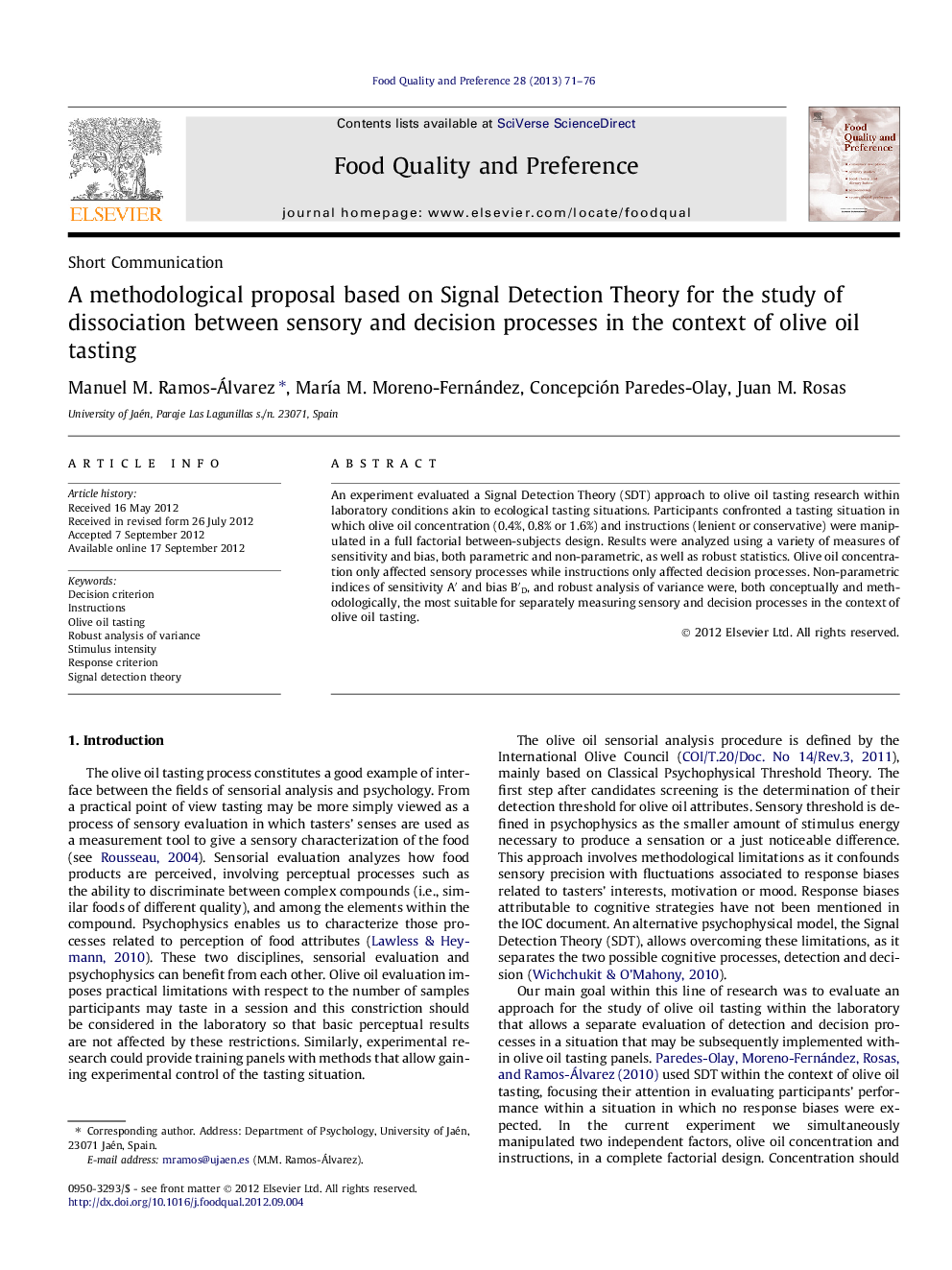| Article ID | Journal | Published Year | Pages | File Type |
|---|---|---|---|---|
| 4317355 | Food Quality and Preference | 2013 | 6 Pages |
An experiment evaluated a Signal Detection Theory (SDT) approach to olive oil tasting research within laboratory conditions akin to ecological tasting situations. Participants confronted a tasting situation in which olive oil concentration (0.4%, 0.8% or 1.6%) and instructions (lenient or conservative) were manipulated in a full factorial between-subjects design. Results were analyzed using a variety of measures of sensitivity and bias, both parametric and non-parametric, as well as robust statistics. Olive oil concentration only affected sensory processes while instructions only affected decision processes. Non-parametric indices of sensitivity A′ and bias B′D, and robust analysis of variance were, both conceptually and methodologically, the most suitable for separately measuring sensory and decision processes in the context of olive oil tasting.
► This experiment evaluated a SDT approach to olive oil tasting research. ► Variables affecting sensitivity and bias were manipulated simultaneously. ► The results allowed us to conclude in favor of SDT indexes A′ and B′D. ► The robust statistical analysis probes to be more suitable than the classical one.
